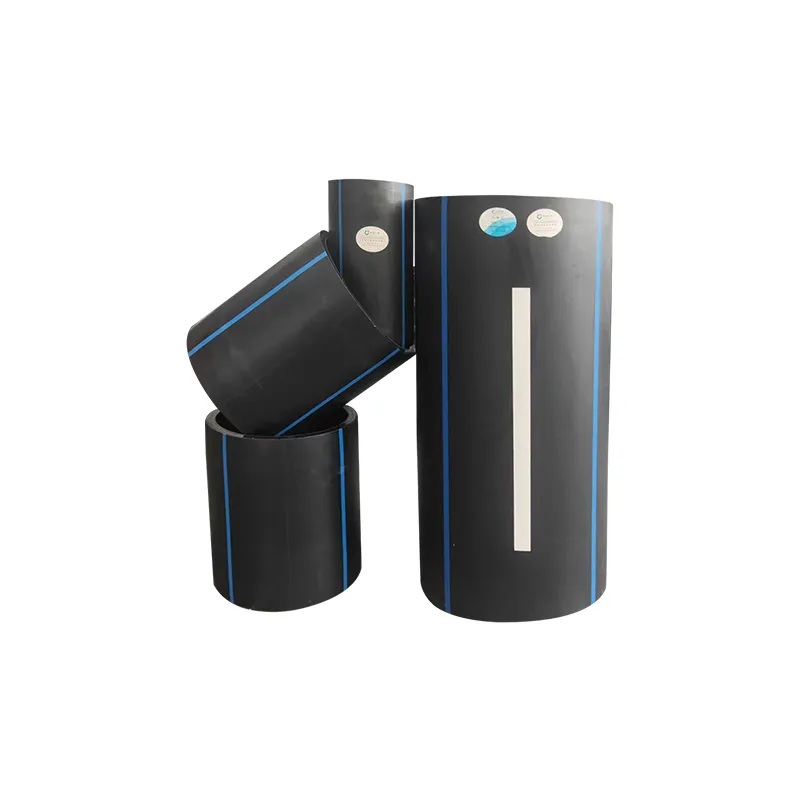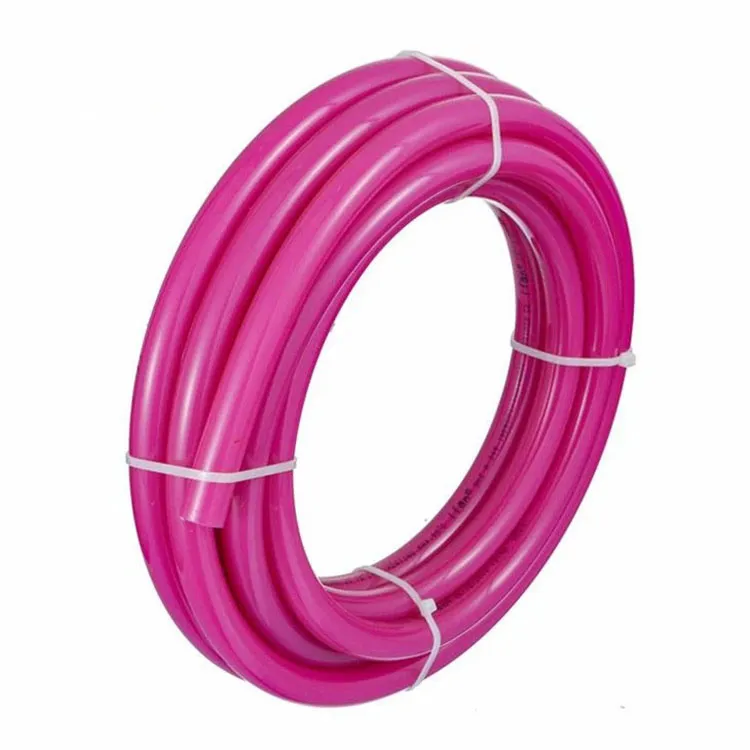High Density Polyethylene (HDPE) water pipes are one of the most popular choices for water supply systems due to their durability, flexibility, and corrosion resistance. However, before buying HDPE water pipes, there are several factors that you should consider to ensure you make the right choice.
Table of Contents
2. How do I properly install and maintain HDPE water pipes to ensure their longevity?
4. Are HDPE water pipes suitable for use in high-pressure water systems?
6. What is the maximum and minimum temperature range for using HDPE water pipes?
1. What are the different types of HDPE water pipes available, and how do I choose the right one for my application?
There are different types of HDPE (high-density polyethylene) water pipes available, and the selection depends on various factors such as the operating conditions, fluid characteristics, installation requirements, and regulatory compliance. Here are some common types of HDPE water pipes:
1. PE80 and PE100: These are two grades of HDPE pipes that are classified based on their minimum required strength and pressure ratings. PE80 pipes are suitable for low-pressure applications, while PE100 pipes are suitable for high-pressure applications.
2. SDR (Standard Dimension Ratio): This is a ratio that describes the pipe's wall thickness relative to its outside diameter. HDPE pipes are available in different SDRs, such as SDR 11, SDR 13.6, and SDR 17, with varying pressure ratings and flow characteristics.
3. Blue Stripe: This is a type of HDPE pipe that is designed for use in drinking water systems. The blue stripe indicates that the pipe is compliant with NSF/ANSI 61 standards for drinking water safety.
4. Corrugated HDPE: This is a type of HDPE pipe that has a corrugated exterior and is used for underground drainage systems, stormwater management, and agricultural applications.
When choosing the right type of HDPE water pipe for your application, consider factors such as the pressure, temperature, and flow requirements, the fluid characteristics, the regulatory compliance requirements, and the installation conditions. Consulting with a qualified engineer or the manufacturer's recommendations can also help ensure that the pipes are selected correctly for your specific application.
2. How do I properly install and maintain HDPE water pipes to ensure their longevity?
Proper installation and maintenance of HDPE (high-density polyethylene) water pipes are crucial to ensure their longevity and optimal performance. Here are some guidelines to follow:
Installation:
1. Site Preparation: The installation site should be free of debris and leveled to ensure proper support and alignment of the pipes.
2. Handling and Storage: HDPE pipes should be handled and stored carefully to prevent damage, bending, or deformation. The pipes should be stored horizontally on a flat surface and protected from sunlight, heat, and moisture.
3. Jointing: HDPE pipes can be joined using various techniques, such as butt fusion, electrofusion, or mechanical connections. The jointing technique used should be appropriate for the specific application and comply with industry standards.
4. Trenching and Backfilling: The trench should be wide enough to accommodate the pipe and allow for proper backfilling and compaction. The backfill material should be free of sharp objects and debris that could damage the pipe.
5. Testing: HDPE pipes should be tested to ensure they meet the required specifications and performance standards before and after installation. The tests may include hydrostatic pressure testing, air pressure testing, or vacuum testing.
Maintenance:
1. Inspections: HDPE pipes should be inspected regularly for signs of damage, leaks, or corrosion. Any issues should be addressed promptly to prevent further damage or failure.
2. Cleaning: The interior of HDPE pipes can accumulate sediment and debris over time, which can reduce flow and cause blockages. Regular cleaning using high-pressure water or air can help remove the buildup and maintain optimal flow.
3. Protection: HDPE pipes should be protected from excessive exposure to sunlight, heat, and chemicals, which can cause degradation and reduce their lifespan. Protective coatings or covers may be used to prevent UV damage and corrosion.
By following these guidelines, you can ensure the proper installation and maintenance of HDPE water pipes and maximize their lifespan and performance. Consulting with a qualified engineer or the manufacturer's recommendations can also help ensure that the pipes are installed and maintained correctly for your specific application.
3. What tests should I perform on HDPE water pipes before and after installation to ensure their quality and safety?
Before installation, it is recommended to perform the following tests on HDPE water pipes to ensure their quality and safety:
1. Visual Inspection: Examine the pipes for any visible defects, such as cracks, scratches, gouges, or dents.
2. Dimensions and Tolerances: Measure the dimensions of the pipes to ensure they meet the required specifications, including the outside diameter, wall thickness, and length. Check the tolerances to ensure they are within acceptable limits.
3. Ring Stiffness: Determine the ring stiffness of the pipes to ensure they meet the required specifications for structural integrity.
4. Hydrostatic Pressure Test: Test the pipes under hydrostatic pressure to ensure they can withstand the required pressure without failure.
5. Resistance to Slow Crack Growth: Perform a slow crack growth test to ensure the pipes can resist cracking under long-term stress.
After installation, it is recommended to perform the following tests on HDPE water pipes to ensure their quality and safety:
1. Leak Test: Test the pipes for leaks to ensure there are no installation errors or defects in the pipes.
2. Infiltration Test: Test the pipes for infiltration to ensure there are no defects in the joints or connections.
3. Air Pressure Test: Test the pipes under air pressure to ensure they can withstand the required pressure without failure.
4. Ground Movement Test: Test the pipes for ground movement to ensure they can withstand external loads and environmental conditions.
It's important to note that the actual testing requirements for HDPE water pipes may vary depending on the specific application and regulatory requirements. It is recommended to consult with a qualified engineer or the manufacturer's specifications to determine the appropriate testing requirements for your specific application.
4. Are HDPE water pipes suitable for use in high-pressure water systems?
HDPE (high-density polyethylene) water pipes are suitable for use in high-pressure water systems. HDPE pipes have excellent resistance to pressure, which makes them suitable for use in high-pressure applications such as water mains, irrigation systems, and fire sprinkler systems.
HDPE pipes are designed to withstand high pressure and have a high tensile strength, which means they can withstand the stress caused by high-pressure water systems. They are also flexible, which allows them to expand and contract without cracking or breaking under pressure.
In addition, HDPE pipes have excellent resistance to abrasion, corrosion, and chemical damage, which makes them suitable for use in harsh environments and applications where the water quality may be poor.
It's important to note that the design and installation of HDPE water pipes in high-pressure systems should be done in accordance with industry standards and regulations, and the pipes should be tested to ensure they can withstand the required pressure without failure. Consulting with a qualified engineer or the manufacturer's specifications can help ensure that the HDPE pipes are suitable for use in a specific high-pressure water system.
HDPE pipes can be used in high-pressure water systems with pressures ranging from a few bar to several hundred bar, depending on the specific application and regulatory requirements. The maximum allowable operating pressure (MAOP) of HDPE pipes is typically determined by industry standards and is based on factors such as the pipe diameter, wall thickness, and temperature.
To ensure that HDPE pipes are suitable for use in a specific high-pressure water system, it is important to consider factors such as the operating pressure, flow rate, fluid temperature, and environmental conditions. For example, if the fluid temperature exceeds the recommended temperature range for the specific type of HDPE, it can cause the pipe to soften and lose its structural integrity, leading to failure.
It's also important to ensure that the HDPE pipes are properly installed and supported to prevent excessive bending, sagging, or deflection under pressure. The installation method and jointing technique used should also be appropriate for the specific application and pressure requirements.
In summary, HDPE water pipes are suitable for use in high-pressure water systems, but it's important to consider the specific application and regulatory requirements when selecting, designing, and installing the pipes. Consulting with a qualified engineer or the manufacturer's specifications can help ensure that the HDPE pipes are suitable and safe for use in a high-pressure water system.
5. How does the cost of HDPE water pipes compare to other types of water pipes, and are they a cost-effective option?
The cost of HDPE water pipes can vary depending on factors such as the pipe diameter, wall thickness, and length, as well as local market conditions and supply and demand. However, in general, HDPE water pipes tend to be more expensive than some other types of water pipes, such as PVC and PEX pipes.
Despite the higher initial cost, HDPE water pipes are often considered a cost-effective option in the long run due to their superior performance and durability. HDPE water pipes have a longer service life than many other types of water pipes, which reduces the need for frequent replacements and maintenance. They are also resistant to corrosion, abrasion, and chemical damage, which can lead to lower repair and replacement costs over time.
In addition, HDPE water pipes have a smooth inner surface that reduces friction and improves flow efficiency, which can result in energy savings and lower pumping costs. They are also lightweight and easy to transport and install, which can reduce installation time and labor costs.
Overall, while HDPE water pipes may have a higher initial cost compared to some other types of water pipes, they offer several cost-saving benefits over their service life, making them a cost-effective option in many applications.
6. What is the maximum and minimum temperature range for using HDPE water pipes?
High-density polyethylene (HDPE) water pipes are designed to withstand a wide range of temperatures and environmental conditions. The maximum and minimum temperature range for using HDPE water pipes depends on the specific grade and type of HDPE used in the pipe, as well as the operating pressure of the pipe.
In general, HDPE water pipes can be used in temperatures ranging from -40°C (-40°F) to 60°C (140°F) without any degradation of the material or loss of performance. However, the actual maximum and minimum temperature range for a specific HDPE water pipe should be determined by consulting the manufacturer's specifications and/or consulting with a qualified engineer.
It's important to note that the installation and operating conditions of the HDPE water pipe, such as the type of fluid being transported, the pressure and flow rate of the fluid, the depth of the pipe, and the presence of external or internal heat sources, can also affect the maximum and minimum temperature range for using HDPE water pipes.
In conclusion, buying HDPE water pipes requires careful consideration of several factors such as material grade, diameter, wall thickness, and cost. Consulting with a reputable supplier or manufacturer and understanding local regulations is also important. By taking these factors into consideration, you can make an informed decision that meets your specific water supply needs and ensures long-term reliability and performance.







659.webp)
210.webp)
328.webp)

294.webp)
476.webp)
420.webp)
146.webp)


